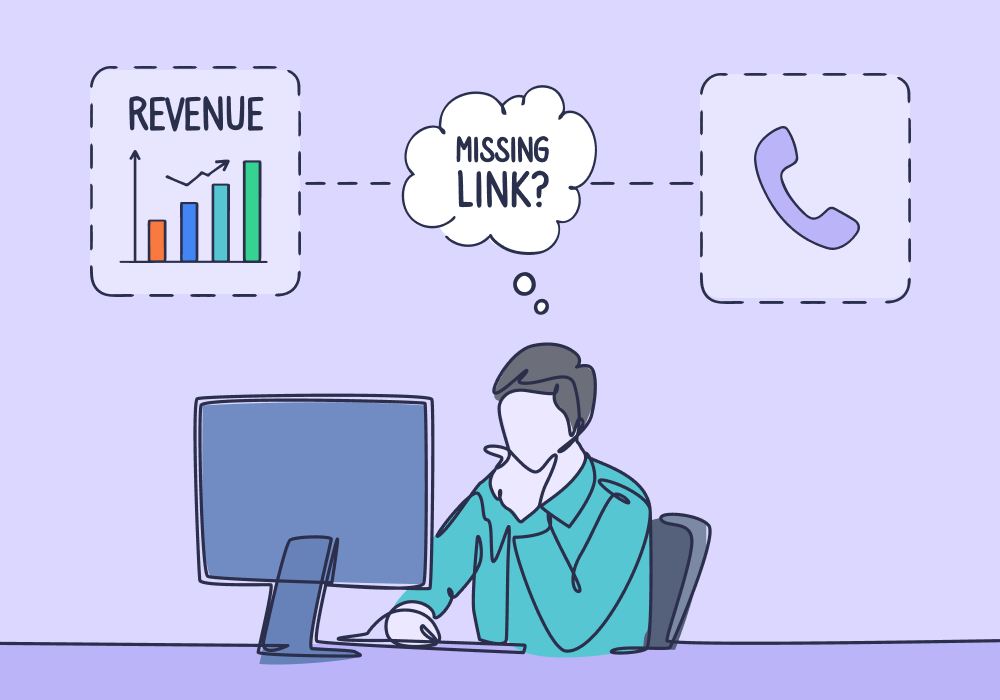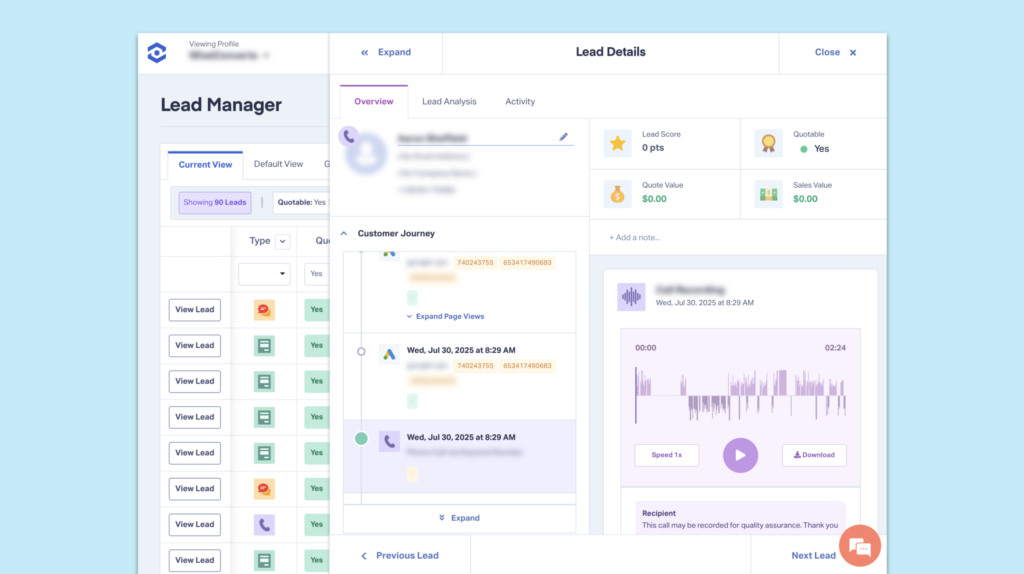
Marketing teams are drowning in data while starving for answers.
CaliberMind's 2025 State of Marketing Attribution report reveals the crisis: 40% of marketers can't track pipeline generated, and only 50% can measure opportunities created. The culprit? Data integration—65.7% cite it as their top measurement challenge.
Form fills live in the CRM. Phone calls in a call tracking system. Chats logged in a help desk tool. Web visits tracked in analytics.
Each system captures something, but none of them talk to each other.
As a result, marketers can't answer the most basic question: What's actually working?
Read More: Tech Firm Centralizes, Enhances & Automates Agency’s Affiliate Conversion Tracking [Case Study]
What Fragmented Data Looks Like
When conversion data lives in separate systems, you can see individual pieces—clicks here, calls there, revenue somewhere else—but you can't connect them into a complete picture.
And according to CaliberMind, the average martech environment has 17 to 20 platforms—which means fragmented data is a problem plaguing the entire industry.
Here's what this looks like in practice: You spend $5,000 on a Google Ads campaign. To see the full results, you need to check:
- Your call tracking tool: 18 phone calls
- Marketing automation platform: 25 form fills
- Analytics dashboard: 200 clicks, various page visits
Not All Fragmented Data Can Be Combined
To understand what your $5,000 produced, you need to manually unite four different sources. That’s one reason fragmented data is so frustrating: it eats up time and energy switching between tools and resolving data discrepancies.
But it goes further than that.
When sales closes $30,000 in new business, there’s no way to tell if those deals are the same as the leads that came from your campaigns.
Even if you have all the time in the world to stitch fragmented sales data and click data together, it’s impossible to connect your leads to their sales outcomes.
The data silo broke the attribution chain, and you can’t put it back together again.
The Conversion Blind Spot
Data fragmentation creates a particularly painful blind spot: phone calls from paid ads.
When someone clicks your $150 Google Ad and calls your business? That phone conversion exists in a completely separate system from the click data. You can't prove that $150 drove anything.
Your marketing dashboard shows the spend and the click, and your call tracking shows the phone number—but they're not connected.
This isn't a small gap. For service businesses, local companies, and anyone advertising in competitive spaces, phone calls often drive more revenue than form fills. Data silos sever the majority of revenue from its marketing source.
Read More: Turning Phantom Offline Calls into Measurable ROI
The 2026 Stakes
CFOs are demanding predictable ROI. CMOs must justify every dollar of spend with clear, defensible metrics.
In this environment, you can't afford blind spots. When half your conversions are invisible to your tracking system, you're making budget decisions based on incomplete information.
When you can only see form fills, here’s what you see:
| Campaign A | Campaign B | |
| Total cost | $1000 | $1000 |
| Form fills | 100 | 25 |
| Cost per lead | $10 | $50 |
It looks like Campaign A is far more successful, having generated 4x as many leads at 1/5th of the cost. But when you can see your call data as well, the story changes:
| Campaign A | Campaign B | |
| Total cost | $1000 | $1000 |
| Form fills | 100 | 25 |
| Calls | 50 | 250 |
| Cost per lead | $6.67 | $3.63 |
When form data and call data is tracked in the same place, you can see the true results of your marketing: Campaign B brought in 1.8x the amount of leads at roughly half the price.
Without complete conversion data, attribution doesn't just appear broken. It actively misleads you.
What Unified Tracking Looks Like
Unified tracking means everything—calls, forms, chats, and clicks—lives in one system. No exports. No stitching. No guessing.
You see the full journey, not fragments.
A single lead record shows the ad they clicked, the pages they viewed, the call they made, and the deal they closed.
When every conversion is tracked in the same place, your reports stop lying. You know which campaigns drive real revenue, not just clicks and forms.
Closing the Gap
Fragmented data hides the truth. Unified data reveals it.
WhatConverts brings every conversion into one place, so you can finally see what’s working.
Ready to unify your conversion data in one place?
Start your free 14-day trial of WhatConverts today or book a demo with a product expert to see how we help prove and grow your ROI.
Get a FREE presentation of WhatConverts
One of our marketing experts will give you a full presentation of how WhatConverts can help you grow your business.
Schedule a Demo
Grow your business with WhatConverts






